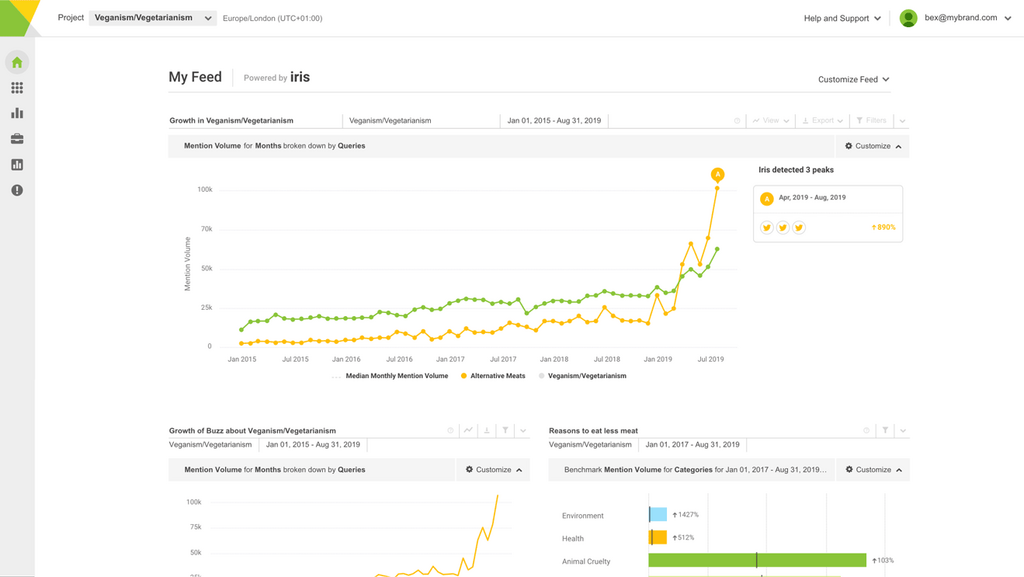Do the groundwork
Google Analytics tells you the source of your web traffic, from which social site to which search engine. To undertake a detailed campaign analysis, you’ll need to utilize UTM codes.
UTM consists of a short code that is added to the end of a link. It means that you can tell not just that someone came from Twitter, but whether they clicked on a link in your Twitter bio, or a Tweet, or a direct message, or a paid ad.
UTM codes tell Google the detailed story of how traffic arrives at your site, so you can analyze it in Google Analytics.
It does this by using a few different elements:
- Source – The referrer of the traffic: Facebook, Twitter, StumpleUpon.
- Medium – The marketing medium of the traffic: Social, CPC, email, banner.
- Content – The particular advert that drove the traffic.
- Campaign – The campaign name, the specific promotion.

While you have some flexibility in your naming conventions, it is important to be consistent. You can use Google’s URL Builder or a similar URL generator to simplify the process, and as the URLs generated are long it’s a good idea to use a link shortener to tidy up the URL.
By segmenting the data in this way, you can understand marketing ROI as part of your campaign analysis. You can work out cost per lead (CPL) as part of this, dividing your spend by the total number of leads gained during the campaign.
This UTM guide from Buffer walks you through how to use UTMs in more detail.
What to measure in a campaign analysis
Look at website analytics
Having set up UTM codes, you can track where your traffic is coming from, and attribute traffic to specific campaigns.
You may have multiple campaigns running at the same time, but the UTM codes allow you to track them individually. You can analyze whether a particular source is proving to be more effective than another.
As a look behind the scenes here at Brandwatch, here’s the custom built UTM source generator our social team uses, below.

Look at email analytics
Your email marketing software (MailChimp is a popular and free option) should be able to measure the open rate of the emails you send out.
This calculation takes the number of emails opened and divides it by the number sent, minus the ones that bounced. This tells you the percentage of emails that were actually opened, out of all the emails that arrived in an inbox.
Click through rates tell you how many of the emails that were opened enticed people to click on a link and come to your website. You can calculate this by dividing the number of consumers who received your email by the number of consumers that arrived at your site via the email campaign,
You can compare your previous efforts, or if you are just starting out, try looking at HubSpot’s customer benchmark study.
CRM data
Of course, the end goal of any campaign is to drive new business. Look at your CRM software to understand how many new opportunities, leads, and completed sales resulted from your campaign. You will need this data to calculate marketing ROI, as the new business won will be recorded here.

Campaign analysis with social intelligence
This combination of web traffic, email data, and CRM data will give you a good understanding of the number of people reached for an online campaign.
Depending on your industry, brand, or campaign, this data might not tell the full story. Your aim might have been to increase brand awareness, or you may be a consumer brand with indirect customer relationships – say, a CPG brand whose products are sold in supermarkets.
You may want to understand more about the demographics of the consumers you reached, or how your campaign made people feel. Social intelligence can be used for campaign analysis to add more detail to the data and add a more human understanding of the people you have reached.
Nowadays any campaign, online or offline, will have people talking on social media. There are a variety of social media metrics you can measure that will give you a better understanding of what has worked, and which market segments it has worked with.
Volume of mentions
A simple metric that will give you an indication of brand awareness. Has your campaign increased the amount of conversation around the brand?
Our analysis shows that up to 96% of brand conversations happened outside owned channels, or with mentions that don’t tag the brand, meaning a social intelligence is the only way to pick up all the conversation around your campaign.
Reach
Reach is the potential number of people that those mentions will be seen by. It takes into account the number of followers of each author who mentions you. If your campaign included a celebrity or influencer, they are likely to generate much higher reach.
Engagement
How many people actually took an action when seeing your campaign? This can give you an indication of the number of people that actively engaged with the campaign, and would be more likely to recall it, even if they didn’t go on to click through to your site.
News coverage
Part of your campaign analysis will be to understand how many media mentions you earned and categorize them into different tiered publications.
Social intelligence will make sure you don’t miss any mentions, and also make it easy to categorize the publications. Mentions are automatically categorized by site type, meaning you can read through the news mentions and report on the top publications that have covered your campaign.

Share of Voice
While you might see an increase in your number of mentions across the web, you want to benchmark this against your competitors to see how you have increased your share of voice in comparison to them.
Purchase intent
You can create complex Boolean queries in a social intelligence tool like Brandwatch, meaning you can find instances of people stating they intend to buy your product.
Monitoring for increases in this type of language can again give you an indication of the number of people who have seen the campaign and intend to take an action but have not done so yet.
Sentiment and emotional response
You can easily monitor for positive or negative responses to your campaign as a good social intelligence tool will have sentiment analysis built in.
This can give you an overview of public perception, and you can categorize mentions to understand how sentiment changes in relation to the brand, products, or campaign itself.

For a deeper dive, you can take a sample of mentions and read through them all. As you go, mark each mention with an emotional response. This more detailed approach can reveal anger, frustration, confusion, and so on, which automated analysis cannot.
Brand associations
You can discover the qualities people associate with your brand or product by creating rules that segment the data in different brand associations. Monitoring these over time can reveal changing attitudes and associations that your campaigns can influence.



